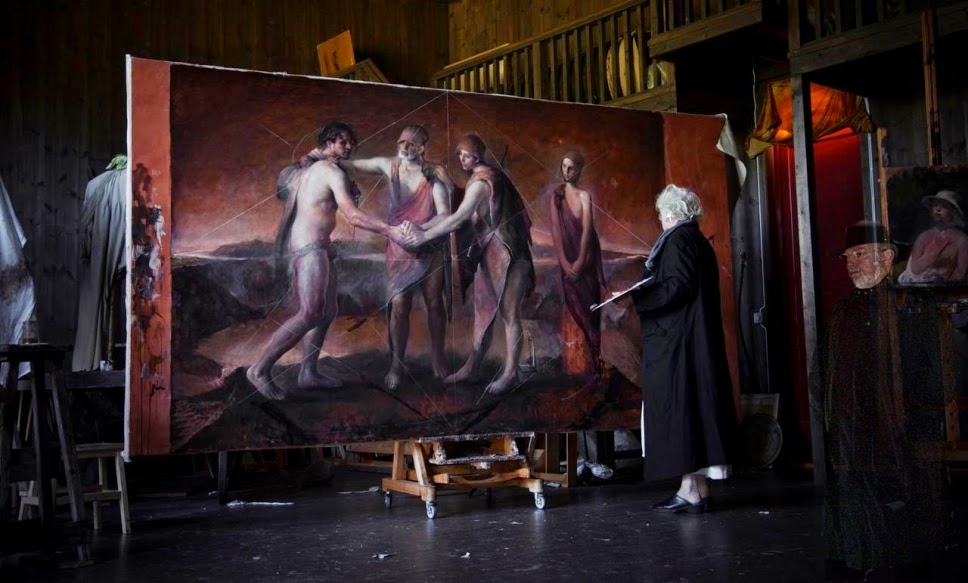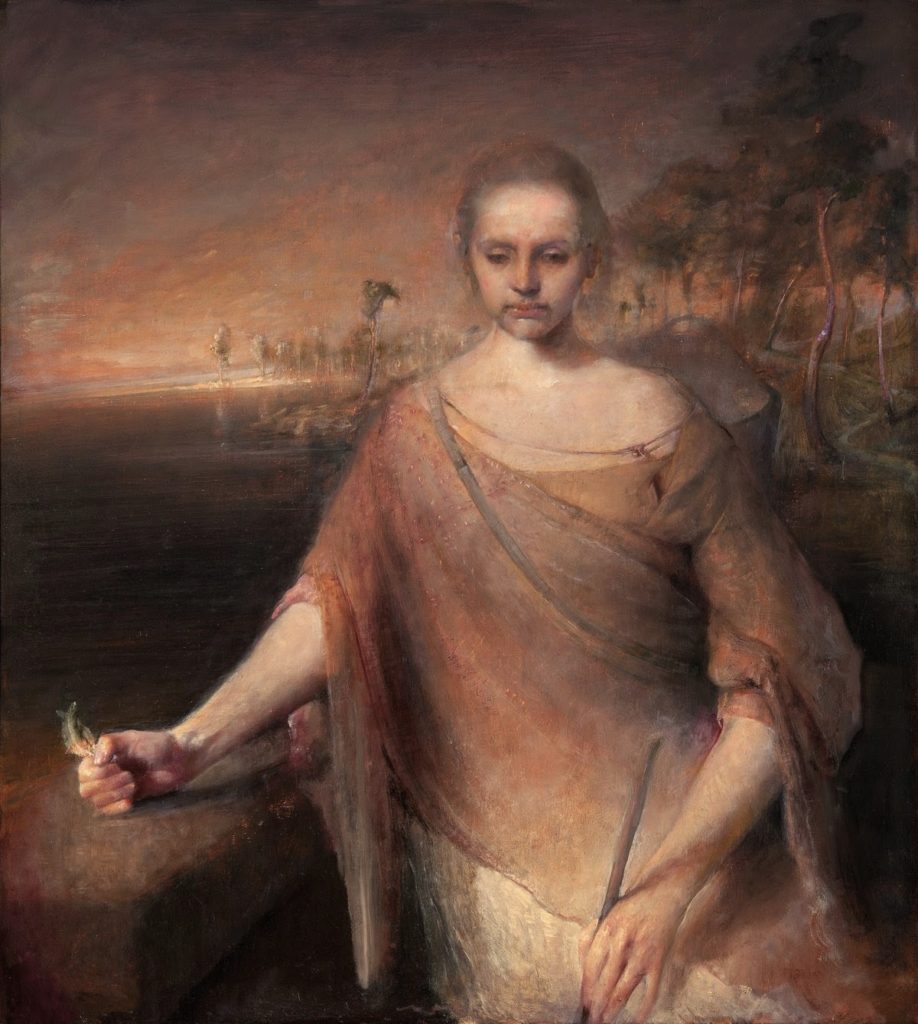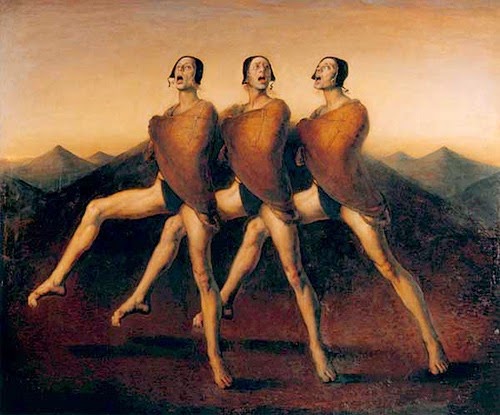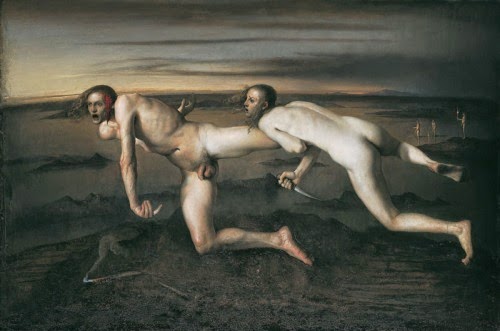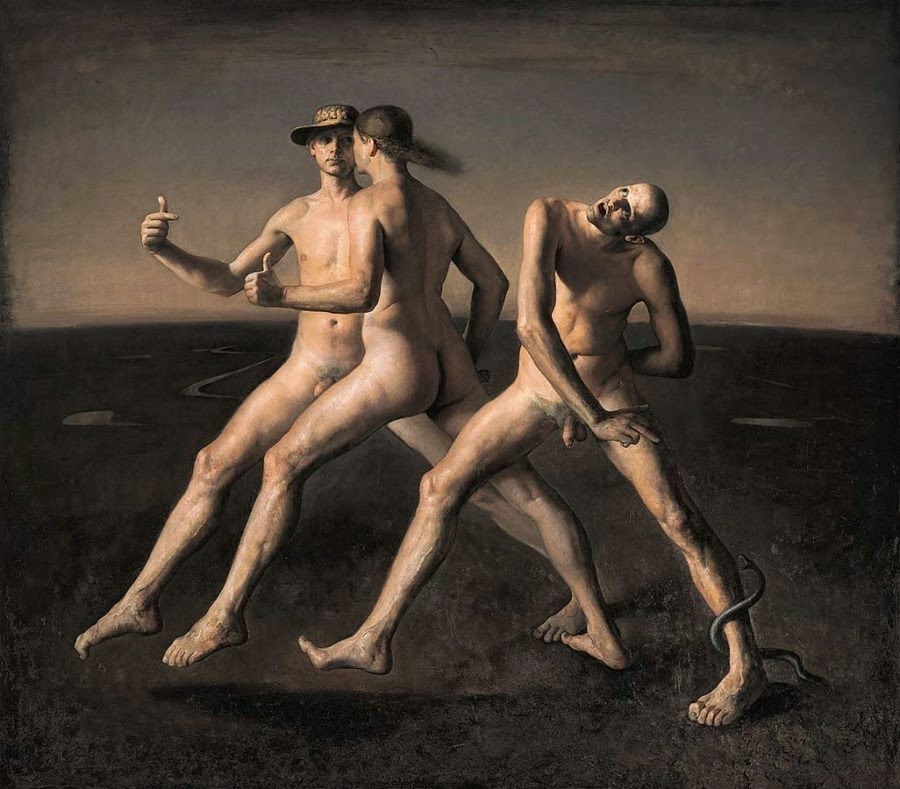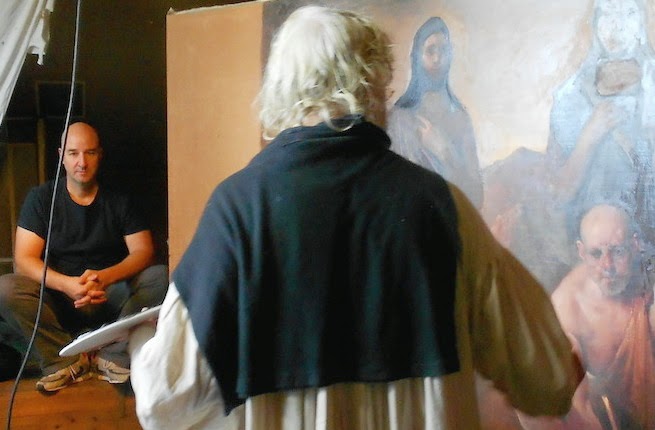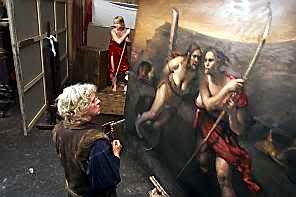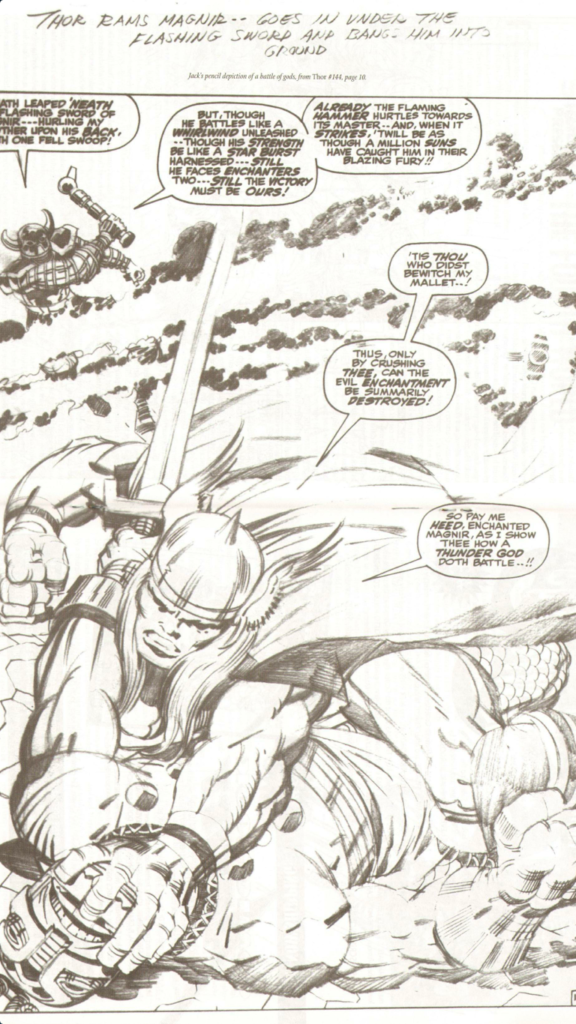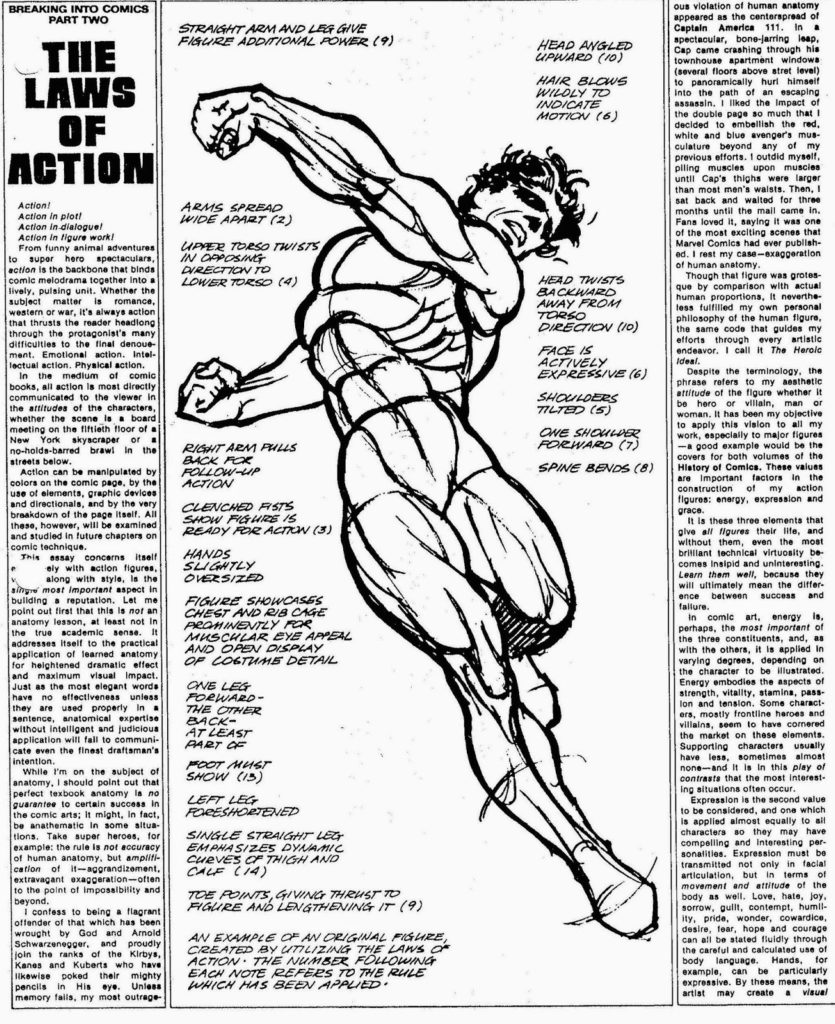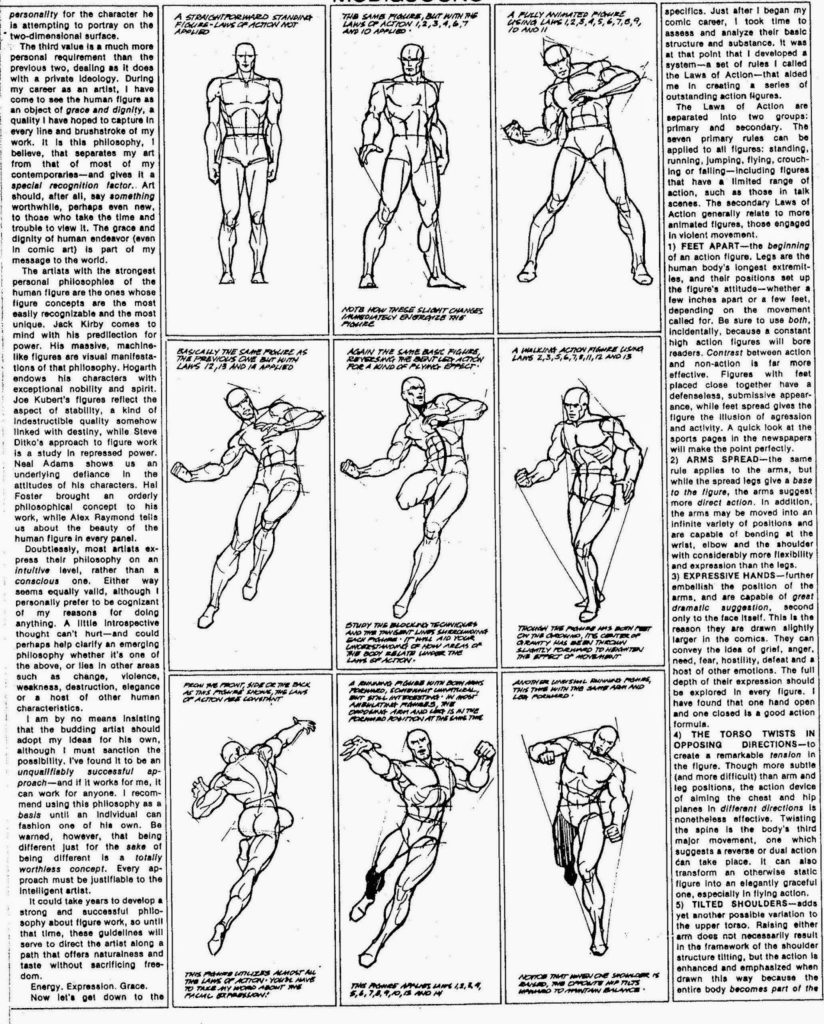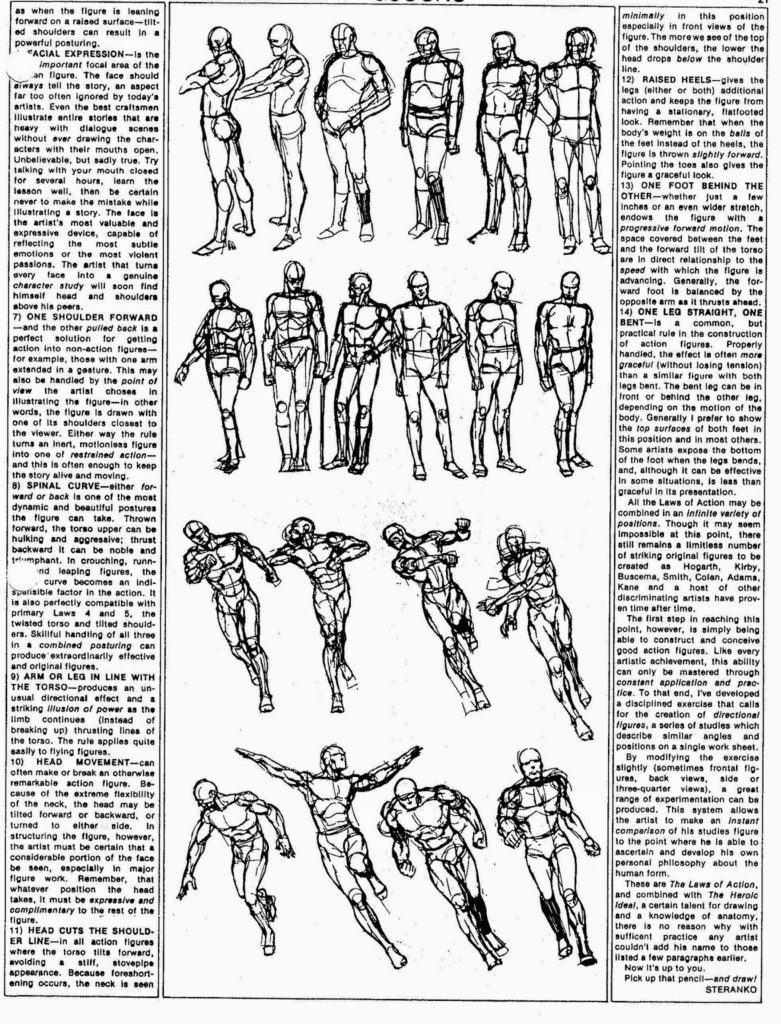Artistic Anatomy – Odd Nerdrum
Odd Nerdrum is one of the most interesting and important artists alive today. Nerdrum’s pictures reflect the spiritual malaise which overwhelms post-modern man. His paintings are timeless, yet radically traditional.
The figures of Nerdrum’s (seemingly) post-apocolyptic landscapes reflect a clear belief in the manipulation of anatomy to express a mood or an idea. The master himself talks about this:
“The highest level you could think about is when you make a picture where you can’t say when it was made. You have to make small heads, big hands, long stomachs, so the whole figure is moving upwards”. (https://www.youtube.com/watch?v=oUrP2cvtFJ4#t=21m34s)
In other of Nerdrum’s paintings he distorts the figures in a less graceful way.
Artistic Anatomy – Kirby, Steranko and the Laws of Action
For much of the 20th century, particularly in the dark days of the 60’s and 70’s, comic books were where much of the figurative tradition lived. Comic books are a great way to start of a series of posts on artistic anatomy considering that the simplification and distortion of anatomy is key to the art form.
The greatest comic artist of all time, Jack Kirby, is a example of an artist using artistic anatomy,

